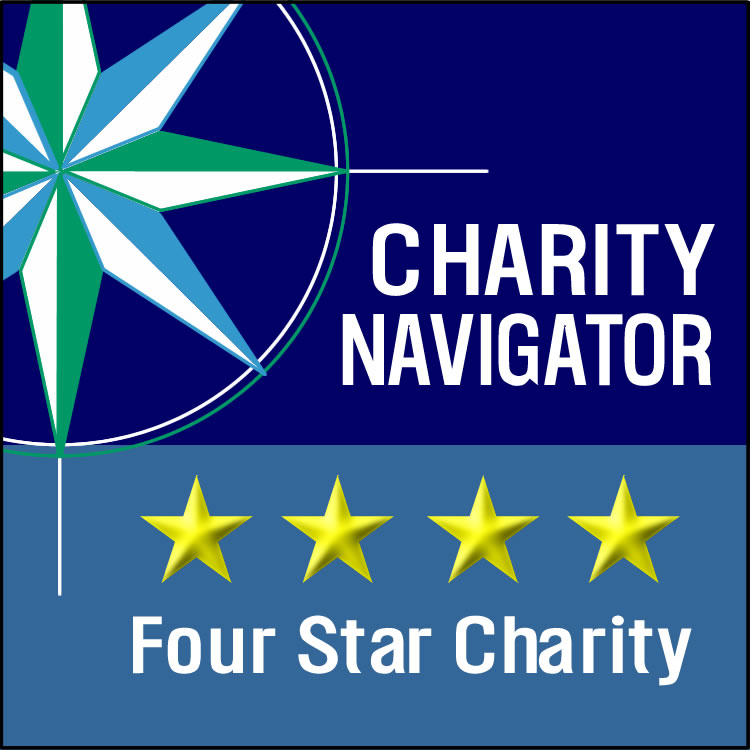What Is Blindness?
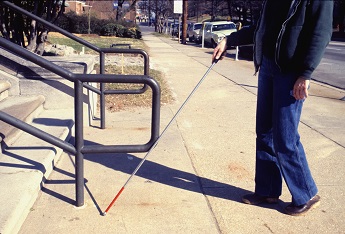 Total blindness typically connotes someone who has a complete lack of light perception, also known as "no light perception" (NLP). Only about 15% of people with eye disorders are totally blind. Most visually impaired people have some vision.
Total blindness typically connotes someone who has a complete lack of light perception, also known as "no light perception" (NLP). Only about 15% of people with eye disorders are totally blind. Most visually impaired people have some vision.Low vision refers to people whose vision cannot be completely corrected by glasses, contact lenses, medicine, surgery, magnification aids or assistive technology.
Visual impairment refers to people whose decreased visual function interferes with their ability perform their activities of daily living (ADLs), such as reading, driving, and watching TV. Visual impairment includes those who have low vision or who are blind.
Learn more about blindness, it's etiology, treatment, and management options
Sign up for SDCB's email list

 There is some amazing technology available to help folks who are blind or visually impaired -- more each year. If you're new to these products, read this article by the University of Illinois.
There is some amazing technology available to help folks who are blind or visually impaired -- more each year. If you're new to these products, read this article by the University of Illinois.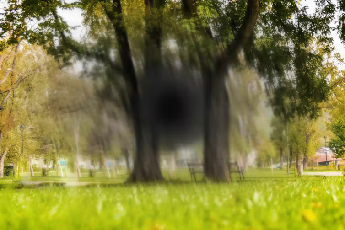 Age-related macular degeneration (AMD) is the leading cause of blindness.
Age-related macular degeneration (AMD) is the leading cause of blindness. Canadian couple Edith Lemay and Sébastian Pelletier have three of their four children with retinitis pigmentosa, an incurable degenerative disorder. All three of them will become blind in the next few years.
Canadian couple Edith Lemay and Sébastian Pelletier have three of their four children with retinitis pigmentosa, an incurable degenerative disorder. All three of them will become blind in the next few years.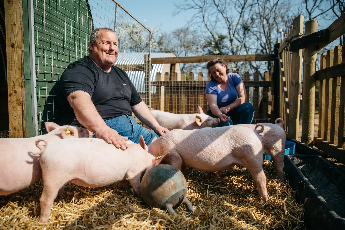 Mike Duxbury became blind at 6 years old due to infantile glaucoma. Being from a family of farmers, Mike was determined from his early childhood years not to let his blindness interfere with his goal of one day becoming a farmer himself.
Mike Duxbury became blind at 6 years old due to infantile glaucoma. Being from a family of farmers, Mike was determined from his early childhood years not to let his blindness interfere with his goal of one day becoming a farmer himself. Certain medical needs may qualify you or someone in your home for savings every month on your gas and electric bill. Apply for the Medical Baseline Allowance program if you need to use more energy due to a qualifying medical condition or to prevent an existing condition from getting worse. Examples include:
Certain medical needs may qualify you or someone in your home for savings every month on your gas and electric bill. Apply for the Medical Baseline Allowance program if you need to use more energy due to a qualifying medical condition or to prevent an existing condition from getting worse. Examples include: Did you know that when you use water, you are using energy? The U.S. Department of Energy found that water heaters account for about 18% of your total energy bill. Here are some water heater tips to help keep you safe and lower your energy bill.
Did you know that when you use water, you are using energy? The U.S. Department of Energy found that water heaters account for about 18% of your total energy bill. Here are some water heater tips to help keep you safe and lower your energy bill.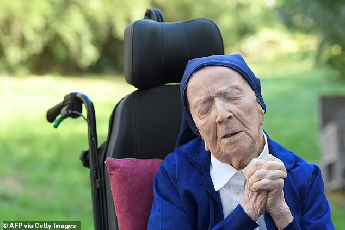 Yesterday, a 119-year old Japanese woman, the world's oldest, died. As a result, the new title holder is 118-year old Lucile Randon, a French nun. Sister Andre, as she is known, is blind.
Yesterday, a 119-year old Japanese woman, the world's oldest, died. As a result, the new title holder is 118-year old Lucile Randon, a French nun. Sister Andre, as she is known, is blind. Making a website accessible enables users with physical or visual disabilities to more easily navigate, read, understand, and use the site. Good websites, and web designers, understand how to make a website accessible and incorporate those techniques into the site. They may even get the site certified as "accessible".
Making a website accessible enables users with physical or visual disabilities to more easily navigate, read, understand, and use the site. Good websites, and web designers, understand how to make a website accessible and incorporate those techniques into the site. They may even get the site certified as "accessible".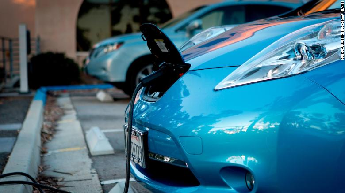 Electric cars are an important answer to the question of what we can do about climate change. But they can also pose a danger to blind and visually impaired people nearby who cannot hear them approaching. Even fully sighted people can be taken by surprise by silent electric vehicles.
Electric cars are an important answer to the question of what we can do about climate change. But they can also pose a danger to blind and visually impaired people nearby who cannot hear them approaching. Even fully sighted people can be taken by surprise by silent electric vehicles.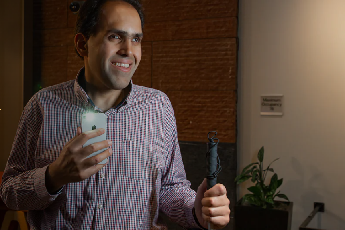 Microsoft offers a free app called "Seeing AI" for blind and visually impaired people. It enables them to read text, identify currency, "see" their surroundings, describe objects, identify product labels, and even decipher colors.
Microsoft offers a free app called "Seeing AI" for blind and visually impaired people. It enables them to read text, identify currency, "see" their surroundings, describe objects, identify product labels, and even decipher colors.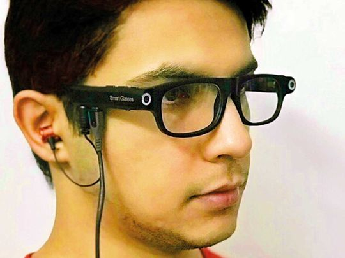 Researchers at Ajman University in the United Arab Emirates have developed sophisticated, artificial intelligence-based glasses which can revolutionize the lives of visually impaired people.
Researchers at Ajman University in the United Arab Emirates have developed sophisticated, artificial intelligence-based glasses which can revolutionize the lives of visually impaired people.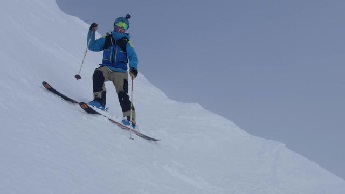 CBS' long-running news show "60 Minutes" recently ran a compelling story about 15-year old Jacob Smith, a legally blind 15-year old who skis on such hazardous terrain that most black diamond experts -- fully sighted -- wouldn't dare to try them.
CBS' long-running news show "60 Minutes" recently ran a compelling story about 15-year old Jacob Smith, a legally blind 15-year old who skis on such hazardous terrain that most black diamond experts -- fully sighted -- wouldn't dare to try them.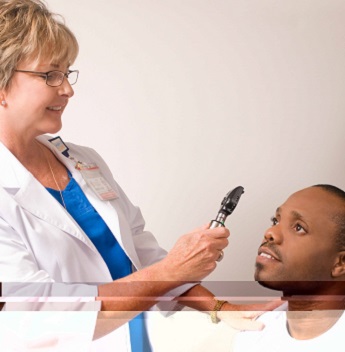 Low Vision is a term used when traditional eye care can no longer help. So, when do you need low vision services?
Low Vision is a term used when traditional eye care can no longer help. So, when do you need low vision services?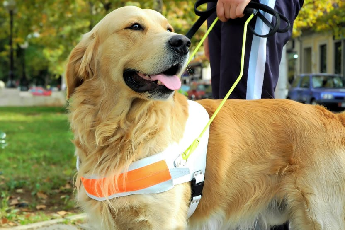 Dogs have been helping make blind peoples' lives better since ancient Pompeii. During World War I, when many German soldiers went blind, Dr. Gerhard Stalling created the world's first school for seeing-eye dogs, also known as guide dogs, in Oldenburg, Germany in 1916.
Dogs have been helping make blind peoples' lives better since ancient Pompeii. During World War I, when many German soldiers went blind, Dr. Gerhard Stalling created the world's first school for seeing-eye dogs, also known as guide dogs, in Oldenburg, Germany in 1916.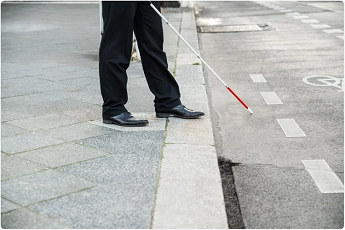 The Journal "Science" has reported that scientists at Netherlands Institute for Neuroscience (NIN) have developed a brain implant which may restore sight to blind and visually impaired people.
The Journal "Science" has reported that scientists at Netherlands Institute for Neuroscience (NIN) have developed a brain implant which may restore sight to blind and visually impaired people.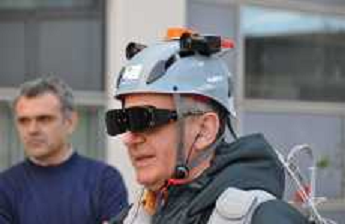 Technology is ensuring a steady flow of devices that are revolutionizing the lives of blind and visually impaired people throughout the world.
Technology is ensuring a steady flow of devices that are revolutionizing the lives of blind and visually impaired people throughout the world.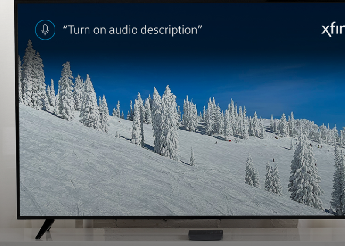 NBCUniversal is currently broadcasting the Winter Olympics from Beijing, offering an unprecedented array of accessibility options which can help blind, visually impaired, and other Olympics fans get the most from their viewing experience.
NBCUniversal is currently broadcasting the Winter Olympics from Beijing, offering an unprecedented array of accessibility options which can help blind, visually impaired, and other Olympics fans get the most from their viewing experience.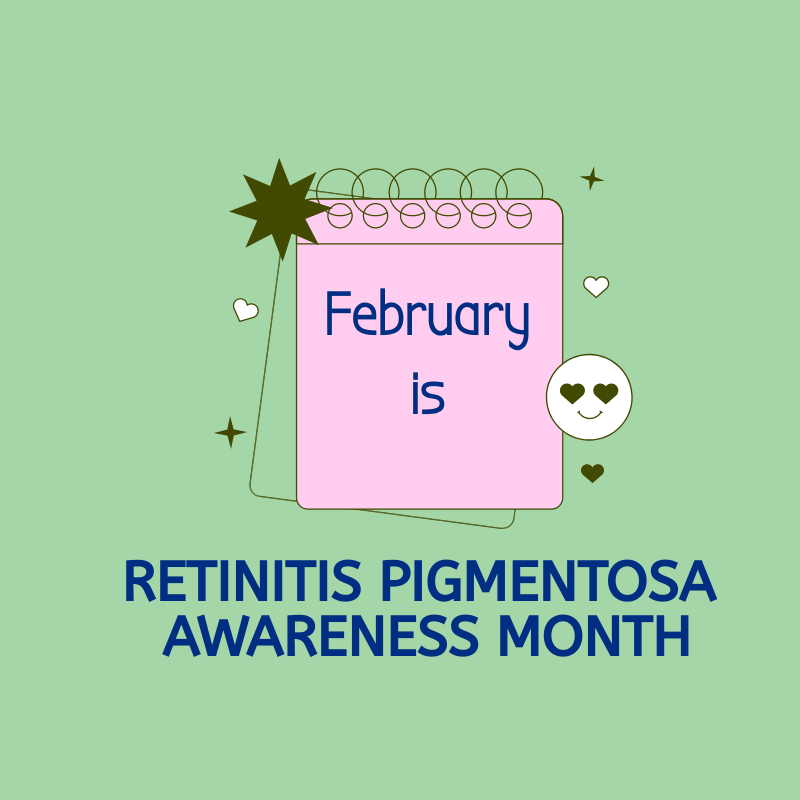 RP is a rare, genetic disorder that breaks down the light-sensitive tissue at the back of the eye.
RP is a rare, genetic disorder that breaks down the light-sensitive tissue at the back of the eye. What is it like living with RP?
What is it like living with RP? Treatment
Treatment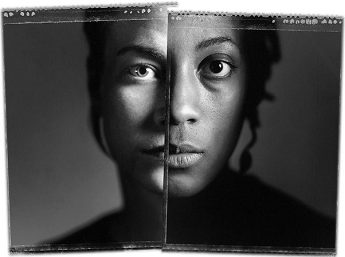 Do blind people know what race is? Can they detect a person's race? Do they care? Can blind people be racist?
Do blind people know what race is? Can they detect a person's race? Do they care? Can blind people be racist?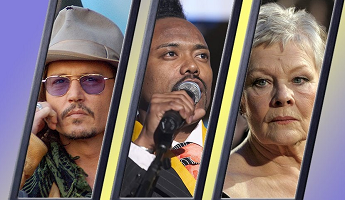 Here are 8 household-name celebrities who have various degrees of vision loss:
Here are 8 household-name celebrities who have various degrees of vision loss: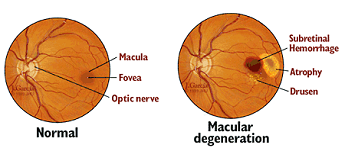 The main cause of blindness among those 50 and older in the industrialized world is Age-related macular degeneration (AMD). This disease affects the retina and plagues 8.7% of the world's population, and a much higher percentage of those over age 60.
The main cause of blindness among those 50 and older in the industrialized world is Age-related macular degeneration (AMD). This disease affects the retina and plagues 8.7% of the world's population, and a much higher percentage of those over age 60.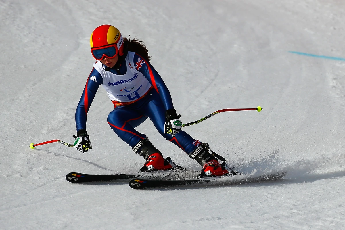 With the Winter Olympics about to begin in Beijing, you might wonder if -- like the Summer Olympics – there will be a Paralympics. Yes! It’ll follow the Olympics by about 2 weeks. You might also wonder what sports are included, and if blind or visually impaired athletes will participate. The primary winter Paralympics sports are ice hockey, snowboard, and wheelchair curling. Unfortunately, none include blind or visually impaired athletes.
With the Winter Olympics about to begin in Beijing, you might wonder if -- like the Summer Olympics – there will be a Paralympics. Yes! It’ll follow the Olympics by about 2 weeks. You might also wonder what sports are included, and if blind or visually impaired athletes will participate. The primary winter Paralympics sports are ice hockey, snowboard, and wheelchair curling. Unfortunately, none include blind or visually impaired athletes. If you or your loved one are newly blind or visually impaired, you may find navigating the landscape of products to assist somewhat daunting. If you need a 101 Primer on what types of devices to consider, you've come to the right place!
If you or your loved one are newly blind or visually impaired, you may find navigating the landscape of products to assist somewhat daunting. If you need a 101 Primer on what types of devices to consider, you've come to the right place!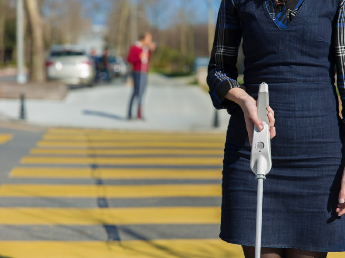 White canes for the blind have been around seemingly forever, but their “technology” seems like it’s from the stone age. It’s basically a stick.
White canes for the blind have been around seemingly forever, but their “technology” seems like it’s from the stone age. It’s basically a stick.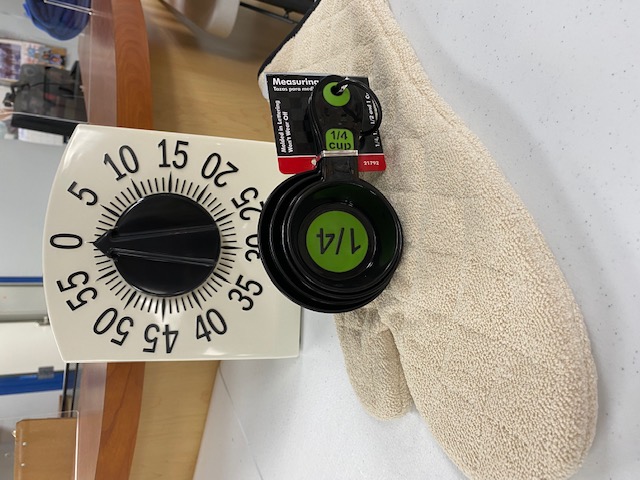 We asked Virginia, Technology Center & Store Manager at SDCB, what are some of the most popular items in the SDCB store. Here’s what she said:
We asked Virginia, Technology Center & Store Manager at SDCB, what are some of the most popular items in the SDCB store. Here’s what she said: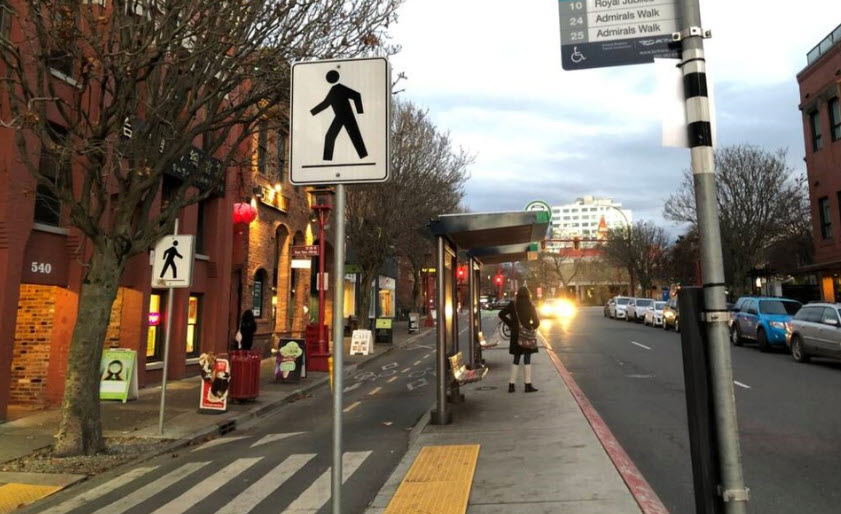 Here's the first in our series of Eye-Opening Profiles, this one on
Here's the first in our series of Eye-Opening Profiles, this one on 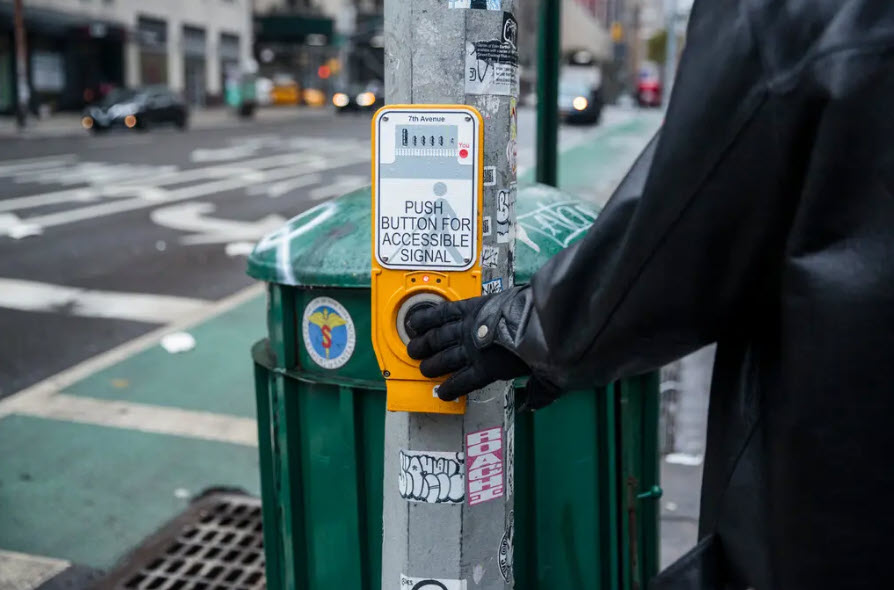 San Diego Center for the Blind has long had a history of advocating for making San Diego a safer city for blind and visually impaired individuals. For example, in 2013, CEO Kim Gibbens
San Diego Center for the Blind has long had a history of advocating for making San Diego a safer city for blind and visually impaired individuals. For example, in 2013, CEO Kim Gibbens 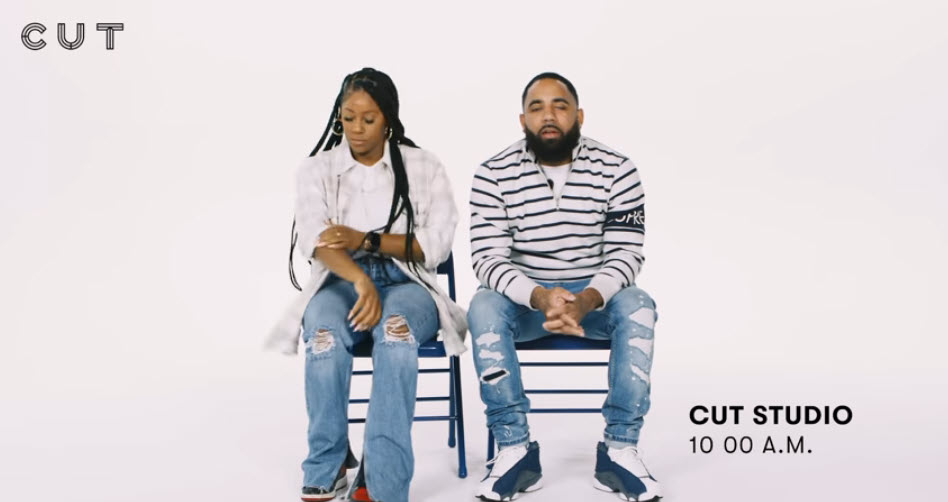 Being blind or visually impaired doesn’t just impact the individual, it also impacts friends and family members. Here’s a sweet vignette about a brother, blinded in a shooting, and a sister. Clearly the bond between the two is loving and strong. The sister wants to support, understand, and always be there for her brother. The brother appreciates the love and support, but has accepted that this is now his “normal”.
Being blind or visually impaired doesn’t just impact the individual, it also impacts friends and family members. Here’s a sweet vignette about a brother, blinded in a shooting, and a sister. Clearly the bond between the two is loving and strong. The sister wants to support, understand, and always be there for her brother. The brother appreciates the love and support, but has accepted that this is now his “normal”.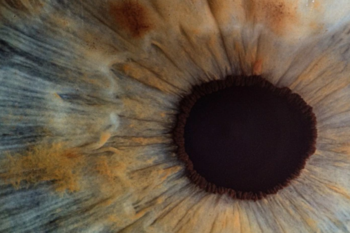 Corneal blindness is the third most common cause of blindness in the world. In an effort to tackle the common cause of blindness, Australian leaders in corneal bioengineering have formed BIENCO: a consortium that will create bioengineered eye tissue to treat the condition. Fighting global corneal blindness is important; corneal disease affects the lives of about 23 million people around the world.
Corneal blindness is the third most common cause of blindness in the world. In an effort to tackle the common cause of blindness, Australian leaders in corneal bioengineering have formed BIENCO: a consortium that will create bioengineered eye tissue to treat the condition. Fighting global corneal blindness is important; corneal disease affects the lives of about 23 million people around the world.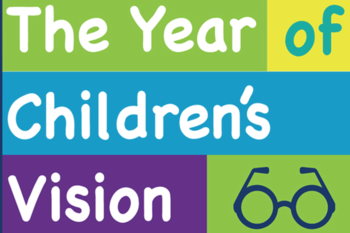 The New Year is just around the corner, and leaders in the field of vision are thinking ahead already. Prevent Blindness, the nation’s oldest nonprofit eye health and safety organization, has declared next year the “Year of Children’s Vision.” One in 5 young children has an undiagnosed vision disorder, which is a problem that needs to be addressed considering vision plays a critical role in children’s physical, cognitive, and social development.
The New Year is just around the corner, and leaders in the field of vision are thinking ahead already. Prevent Blindness, the nation’s oldest nonprofit eye health and safety organization, has declared next year the “Year of Children’s Vision.” One in 5 young children has an undiagnosed vision disorder, which is a problem that needs to be addressed considering vision plays a critical role in children’s physical, cognitive, and social development.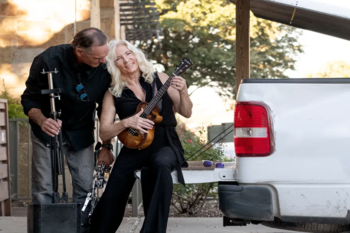 BJ Lentz, 61, lost her vision after an accident in late December 2017. She slipped on fake snow and severely damaged her optic nerves and was diagnosed with ischemic optic neuropathy. Lentz, a part time music teacher, eventually lost most of her vision. However, she recently began performing music again despiste vision loss. Lentz is writing songs and gigging with Polkamatics, Lone Star Swing Orchestra, Austin Polka Band, and fellow musician Jay Webber.
BJ Lentz, 61, lost her vision after an accident in late December 2017. She slipped on fake snow and severely damaged her optic nerves and was diagnosed with ischemic optic neuropathy. Lentz, a part time music teacher, eventually lost most of her vision. However, she recently began performing music again despiste vision loss. Lentz is writing songs and gigging with Polkamatics, Lone Star Swing Orchestra, Austin Polka Band, and fellow musician Jay Webber.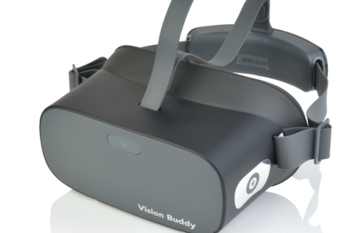 As the Christmas holiday approaches many people are rushing to buy gifts. If you are thinking of purchasing something for someone who is visually impaired, you may find it difficult. The Vision Buddy for the visually impaired may be the perfect gift. Vision Buddy is television-focused assistive technology device for people dealing with visual impairments such as glaucoma, age-related macular degeneration, and retinitis pigmentosa. Vision Buddy, a silicon valley start-up, has a risk-free trial program.
As the Christmas holiday approaches many people are rushing to buy gifts. If you are thinking of purchasing something for someone who is visually impaired, you may find it difficult. The Vision Buddy for the visually impaired may be the perfect gift. Vision Buddy is television-focused assistive technology device for people dealing with visual impairments such as glaucoma, age-related macular degeneration, and retinitis pigmentosa. Vision Buddy, a silicon valley start-up, has a risk-free trial program.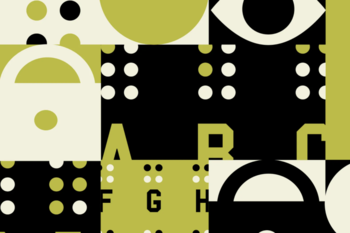 Advocates for the blind have won the right for a three year Digital Millennium Copyright Act exception to make accessible versions of ebooks for people living with blindness. Since publishers rarely cater to the accessibility needs for individuals living with blindness, vision loss advocates have had to fight to ensure that third-parties can lift text and alter it for those who cannot see. Advocates argue that there should be a permanent exemption for the DMCA.
Advocates for the blind have won the right for a three year Digital Millennium Copyright Act exception to make accessible versions of ebooks for people living with blindness. Since publishers rarely cater to the accessibility needs for individuals living with blindness, vision loss advocates have had to fight to ensure that third-parties can lift text and alter it for those who cannot see. Advocates argue that there should be a permanent exemption for the DMCA.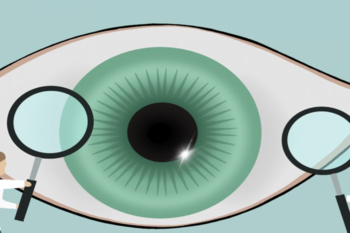 Macular degeneration is a leading cause of blindness for people over the age of 50. Naturally, preventing macular degeneration is a chief priority for scientists. According to new research, the pathway to preventing the common form of eye disease is being laid out. Asst. Engineering Prof. Bradley Gelfand believes that the antidepressant fluoxetine, commonly known by the brand name Prozac, could possibly slow or stop the progression of the condition.
Macular degeneration is a leading cause of blindness for people over the age of 50. Naturally, preventing macular degeneration is a chief priority for scientists. According to new research, the pathway to preventing the common form of eye disease is being laid out. Asst. Engineering Prof. Bradley Gelfand believes that the antidepressant fluoxetine, commonly known by the brand name Prozac, could possibly slow or stop the progression of the condition.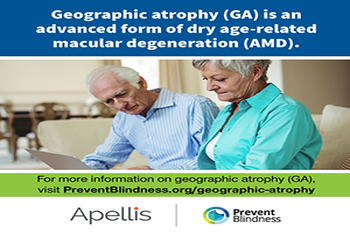 Next week marks the beginning of the first-ever Geographic Atrophy Awareness Week, as declared by Prevent Blindness. Geographic Atrophy is the advanced form of dry age-related macular degeneration (AMD) which leads to vision loss in the center of one’s vision. Prevent Blindness, the nation’s oldest non-profit eye health organization, has created a website dedicated to the condition. What’s more, a new episode in the Prevent Blindness Focus on Eye Health Expert Series dedicated to geographic atrophy will also be available during Geographic Atrophy Awareness Week.
Next week marks the beginning of the first-ever Geographic Atrophy Awareness Week, as declared by Prevent Blindness. Geographic Atrophy is the advanced form of dry age-related macular degeneration (AMD) which leads to vision loss in the center of one’s vision. Prevent Blindness, the nation’s oldest non-profit eye health organization, has created a website dedicated to the condition. What’s more, a new episode in the Prevent Blindness Focus on Eye Health Expert Series dedicated to geographic atrophy will also be available during Geographic Atrophy Awareness Week.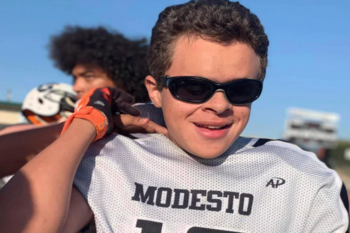 American football is a gruellingly physical sport that takes dedication and skill. By all accounts, the position of quarterback is among the most challenging. Now, imagine playing quarterback without perfect eyesight. For 15-year old Jasen Bracy, when it comes to playing quarterback the young man is up to the challenge and he is an inspiration to all. Why? The blind quarterback has no fear!
American football is a gruellingly physical sport that takes dedication and skill. By all accounts, the position of quarterback is among the most challenging. Now, imagine playing quarterback without perfect eyesight. For 15-year old Jasen Bracy, when it comes to playing quarterback the young man is up to the challenge and he is an inspiration to all. Why? The blind quarterback has no fear!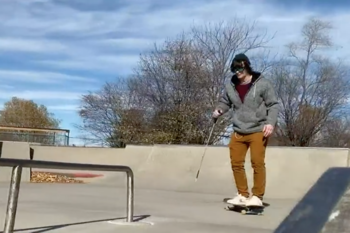 Skateboarder Nick Mullins lost his vision after contracting MRSA in 2009. While blindness might stop many people from hanging up their skateboard, Nick doubled down on doing an activity he loves. The blind skateboarder helps others with vision loss find the courage to skateboard too. He says the tricks don’t have to stop with vision loss.
Skateboarder Nick Mullins lost his vision after contracting MRSA in 2009. While blindness might stop many people from hanging up their skateboard, Nick doubled down on doing an activity he loves. The blind skateboarder helps others with vision loss find the courage to skateboard too. He says the tricks don’t have to stop with vision loss.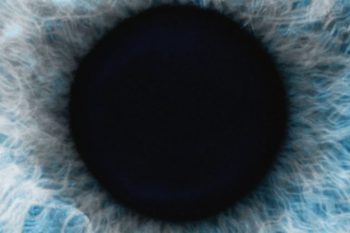 Scientists from multiple institutes of higher learning collaborated on a project to reverse blindness. Through the use of a brain implant, researchers were able to help a blind woman see and identify several letters. The six-month-long study involved a 57-year-old woman who became blind 16 years ago. The tiny implant, about the size of a penny, bypasses the optic nerve and stimulates the brain's visual cortex. The study findings appear in The Journal of Clinical Investigation.
Scientists from multiple institutes of higher learning collaborated on a project to reverse blindness. Through the use of a brain implant, researchers were able to help a blind woman see and identify several letters. The six-month-long study involved a 57-year-old woman who became blind 16 years ago. The tiny implant, about the size of a penny, bypasses the optic nerve and stimulates the brain's visual cortex. The study findings appear in The Journal of Clinical Investigation.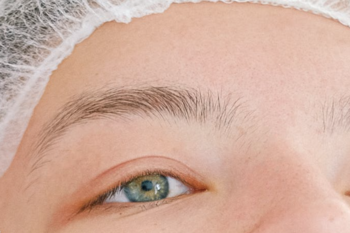 The National Eye Institute has big plans for the next five years. The NEI has a plan to eliminate vision loss and improve quality of life through research. The endeavor includes a focus on six areas of eye anatomy and function — retinal diseases; corneal diseases; lens and cataract; glaucoma and optic neuropathies; strabismus, amblyopia and visual processing; and low vision and blindness rehabilitation.
The National Eye Institute has big plans for the next five years. The NEI has a plan to eliminate vision loss and improve quality of life through research. The endeavor includes a focus on six areas of eye anatomy and function — retinal diseases; corneal diseases; lens and cataract; glaucoma and optic neuropathies; strabismus, amblyopia and visual processing; and low vision and blindness rehabilitation. According to the Centers for Disease Control and Prevention, more than 3.4 million Americans 40 years and older are blind or visually impaired. While blindness and vision loss are prevalent in the United States, it's difficult for most sighted people to grasp what it's like living with blindness fully. In fact, there are many misconceptions that sighted people harbor about living with blindness. Mark Riccobono, the president of the National Federation of the Blind, would like those who do not live with vision loss to understand about engaging with blind people:
According to the Centers for Disease Control and Prevention, more than 3.4 million Americans 40 years and older are blind or visually impaired. While blindness and vision loss are prevalent in the United States, it's difficult for most sighted people to grasp what it's like living with blindness fully. In fact, there are many misconceptions that sighted people harbor about living with blindness. Mark Riccobono, the president of the National Federation of the Blind, would like those who do not live with vision loss to understand about engaging with blind people: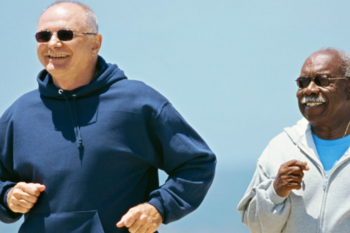 As people age they are at greater risk of experiencing eye health problems and vision loss. However, AARP has outlined ten steps for protecting your vision. The older you get, the more essential it is to prioritize eating healthy, eating right is essential for eye health. Other tips include wearing sunglasses, exercising, sleeping enough, taking screen breaks, good hygiene, moisturizing your eyes. Lastly and perhaps most importantly, regular eye exams are critically important for preventing vision loss.
As people age they are at greater risk of experiencing eye health problems and vision loss. However, AARP has outlined ten steps for protecting your vision. The older you get, the more essential it is to prioritize eating healthy, eating right is essential for eye health. Other tips include wearing sunglasses, exercising, sleeping enough, taking screen breaks, good hygiene, moisturizing your eyes. Lastly and perhaps most importantly, regular eye exams are critically important for preventing vision loss.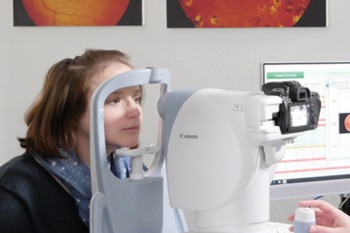 Did you know that the number of Americans struggling with diabetes-related blindness, such as diabetic retinopathy, is expected to nearly double by 2050. It is critical that steps are taken now to prevent people from needlessly suffering from diabetic-related vision loss. Screening for diabetic retinopathy is vital; early detection can prevent blindness. In order to combat this growing problem, Regeneron has sponsored a national educational campaign (noweyesee.com) and RETINA-AI Health has submitted its autonomous diabetic retinopathy screening device to the FDA.
Did you know that the number of Americans struggling with diabetes-related blindness, such as diabetic retinopathy, is expected to nearly double by 2050. It is critical that steps are taken now to prevent people from needlessly suffering from diabetic-related vision loss. Screening for diabetic retinopathy is vital; early detection can prevent blindness. In order to combat this growing problem, Regeneron has sponsored a national educational campaign (noweyesee.com) and RETINA-AI Health has submitted its autonomous diabetic retinopathy screening device to the FDA.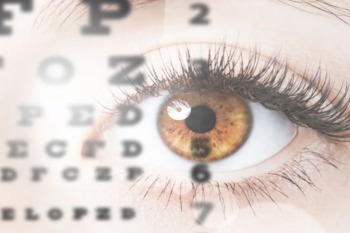 Sandra Block, OD, M Ed, MPH, is a professor emeritus at Illinois College of Optometry. She is also the chairperson of the Public Health Com at the World Council of Optometry. Block recently spoke at the American Academy of Optometry 2021 annual meeting in Boston. She outlines the various visual impairments affecting individuals around the world and states that access to eyecare is essential worldwide. The hope is that eye care will be available to everyone in the future and that eye health will be recognized as a global development issue. Blick concludes:
Sandra Block, OD, M Ed, MPH, is a professor emeritus at Illinois College of Optometry. She is also the chairperson of the Public Health Com at the World Council of Optometry. Block recently spoke at the American Academy of Optometry 2021 annual meeting in Boston. She outlines the various visual impairments affecting individuals around the world and states that access to eyecare is essential worldwide. The hope is that eye care will be available to everyone in the future and that eye health will be recognized as a global development issue. Blick concludes: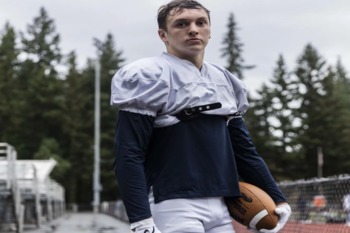 Zach McLean is a junior defensive end at Interlake High School in Bellevue, Washington. He is known for making big plays, being both strong (6 foot 2 and 222 pounds) and fast. What’s more, McLean is also legally blind. He was born with a rare condition that limits his eyesight allowing him to see only peripherally. Zach is truly a remarkable young man who doesn’t give up despite adversity.
Zach McLean is a junior defensive end at Interlake High School in Bellevue, Washington. He is known for making big plays, being both strong (6 foot 2 and 222 pounds) and fast. What’s more, McLean is also legally blind. He was born with a rare condition that limits his eyesight allowing him to see only peripherally. Zach is truly a remarkable young man who doesn’t give up despite adversity.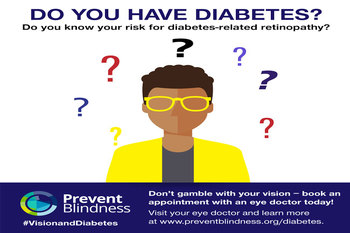 Did you know that November is Diabetes-related Eye Disease Month? DIabetes is, after all, one of the leading causes of vision loss and blindness across the globe. An estimated 415 million adults were living with diabetes in 2015, according to “The Diabetic Retinopathy Barometer Report: Global Findings.” By 2040, this number is set to rise to 642 million, constituting some 10 percent of the global adult population aged between 20 and 79 years.
Did you know that November is Diabetes-related Eye Disease Month? DIabetes is, after all, one of the leading causes of vision loss and blindness across the globe. An estimated 415 million adults were living with diabetes in 2015, according to “The Diabetic Retinopathy Barometer Report: Global Findings.” By 2040, this number is set to rise to 642 million, constituting some 10 percent of the global adult population aged between 20 and 79 years.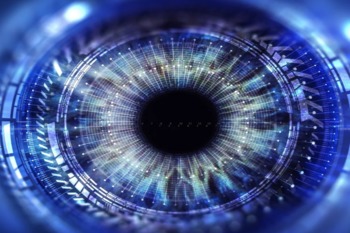 With World Sight Day behind us, we thought it prudent to discuss some of the medical advancements that could one day restore vision to millions of people around the globe. For instance, various forms of nanotechnology and the like are literally bringing the blind and the nearly blind back into the world of the sighted, in some cases reversing blindness caused by conditions like retinitis pigmentosa. What’s more, scientists are making headway with optic nerve cell replication. Such technology could give doctors the power to rebuild the damaged neural pathways that are the root cause of so many cases of blindness.
With World Sight Day behind us, we thought it prudent to discuss some of the medical advancements that could one day restore vision to millions of people around the globe. For instance, various forms of nanotechnology and the like are literally bringing the blind and the nearly blind back into the world of the sighted, in some cases reversing blindness caused by conditions like retinitis pigmentosa. What’s more, scientists are making headway with optic nerve cell replication. Such technology could give doctors the power to rebuild the damaged neural pathways that are the root cause of so many cases of blindness.
